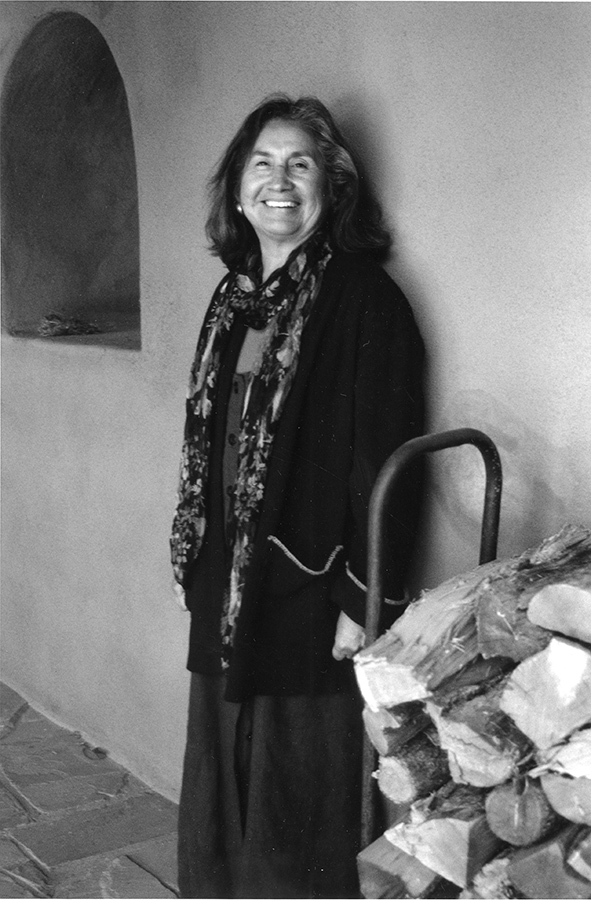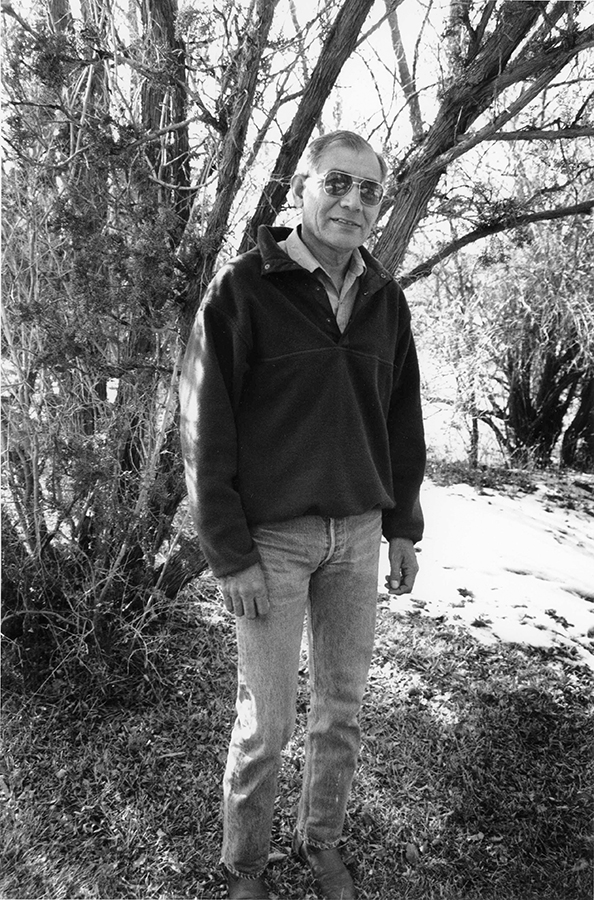In celebration of fifty years of Resident Scholars at the School for Advanced Research (SAR), we will share a series of posts about the program and the scholars over the years.
In 1996, the Resident Scholar Program at the School for Advanced Research (SAR) did something it had not done before and hasn’t since. Three sibling scholars shared the Katrin H. Lamon fellowship: Rina Swentzell, Tessie Naranjo, and Tito Naranjo from Santa Clara Pueblo.
“Rina was most interested in gender and how Santa Clara defined gender, so that was the focus,” said Tessie.
During their residency at SAR, the siblings wrote Sacred to Secular: The Transformation of a Gendered Pueblo World. The manuscript describes “the ongoing transformation of Santa Clara Pueblo from a gendered, sacred world to a secular, economic unit as a result of its embrace of Western values,” stated SAR’s 1996 annual report.
“Traditional Pueblo society looked toward the unifying aspects of life that harmonize, connect, and cause relationships rather than to those that separate, distinguish, or abstract. The universe was viewed as a dynamic web of interrelated events, things, and ideas,” they wrote in their manuscript, which though cited frequently remains unpublished.
“We’re looking at the sacredness of the traditional Pueblo world and the pervasiveness of gender in all that we are,” said Tessie Naranjo in SAR’s 1996 annual report.
In that same annual report, Tito Naranjo explained that “Gender doesn’t mean sex. It means reciprocity. Everything in the Pueblo world is gendered. For instance, the earth is mother and the sun is father; mountains are male, the wind is female.”
Part of a family of eight children that welcomed two more to expand to ten, Rina, Tessie, and Tito were used to working collaboratively and each took a role in the residency project.
Tessie conducted interviews, spending hours each day in one of the scholar offices above the Administration Building diligently transcribing them.
Rina synthesized the transcriptions, putting analysis into writing.
“Rina and Tito spent a lot of time talking, conceptualizing, and philosophizing,” Tessie remembers. “Whatever the topic was, Tito was going to think through it.”
In 1996, the three siblings wrote, “Our common desire is to make sense of ourselves as people who have experienced two very different worlds.”
Artist, architect, and scholar Rina Swentzell earned a BA in Education at New Mexico Highlands University, an MA in Architecture in 1976 and a PhD in American Studies in 1982, both from the University of New Mexico. Her master’s thesis was on the architectural history of Santa Clara Pueblo. She wrote Children of the Clay: A Family of Pueblo Potters in 1992. In 1996, she co-authored with J. J. Brody (NEH Resident Scholar Fellow at SAR 1980-1981) To Touch the Past: the Painted Pottery of the Mimbres People. Rina collaborated with New Mexico PBS to create the video “An Understated Sacredness” in 2009.

Rina Swentzell, 1996. Courtesy of the Catherine McElvain Library.

Tessie Naranjo, 1996. Courtesy of the Catherine McElvain Library.

Tito Naranjo, 1996. Courtesy of the Catherine McElvain Library.
As Christopher Wilson, J.B. Jackson Chair of Cultural Landscape Studies at the University of New Mexico said in 2015, “Rina is certainly one of the most distinguished intellectuals to have graduated from our school.”
Rina’s sister, educator, advocate, and consultant Tessie Naranjo received a PhD in Sociology from the University of New Mexico in 1992. She was co-director of the Northern Pueblos Institute from 2005-2010, helping to establish degree programs in Pueblo Indian Studies. She dedicates much of her life to the continuation of the Tewa language and culture. In 2022, Tessie became a Henry Luce Foundation Indigenous Knowledge Fellow.
An article announcing the fellowship stated, “Whether Naranjo is teaching Tewa, writing a children’s book, volunteering, or gardening, her passion comes from the same place. ‘I want us to remember the values that brought us together, that bound us together. I want us to be conscious of the fact that there is relationship with all things, not only with humans, but with animals and our landscape.’ She concludes with emphasis, ‘What I REALLY, REALLY care about is that we do not forget who we are, even as we live in this modern day and age.’”
Rina and Tessie’s brother, writer, hunting guide, community activist, and educator Tito Naranjo earned an MA in Sociology and Psychology from Highlands University in 1963 and a Master’s in Social Work from the University of Utah in 1967. He is a retired professor of Native American Studies at Highlands University in Las Vegas, New Mexico. He has written at least three books and a number of articles.
During an interview in 2008, Tito said, “I knew the names of the mountains, the names of the landscape and canyons and so on, before I knew the word ‘archaeology.’ The spirits of our ancestors still dwell there, even to this day. After I got an education, I learned about archaeology, and I was able to use both.”
NEXT WEEK: Two National Book Award Winners who were resident scholars at SAR
SOURCES:
Annual Report 1996, School of American Research.
Durlin, Marty. “Interview: Tito Naranjo on the Pueblo World View.” High Country News. Paonia, Colorado. December 8, 2008.
Gonzales, Carolyn. “UNM alumna Rina Swentzell has died.” UNM Newsroom. November 2, 2015.
Interview with Tessie Naranjo, April 25, 2024.
“Luce Fellow Spotlight: Tessie Naranjo.” https://www.firstnations.org/stories/luce-fellow-spotlight-tessie-naranjo/
Naranjo, Tessie. “Stories of Place and Intergenerational Learning.” In: Huaman, E.S., Brayboy, B.M.J. (eds) Indigenous Innovations in Higher Education. Advances in Innovation Education. 2017: SensePublishers, Rotterdam. https://doi.org/10.1007/978-94-6351-014-1_2
